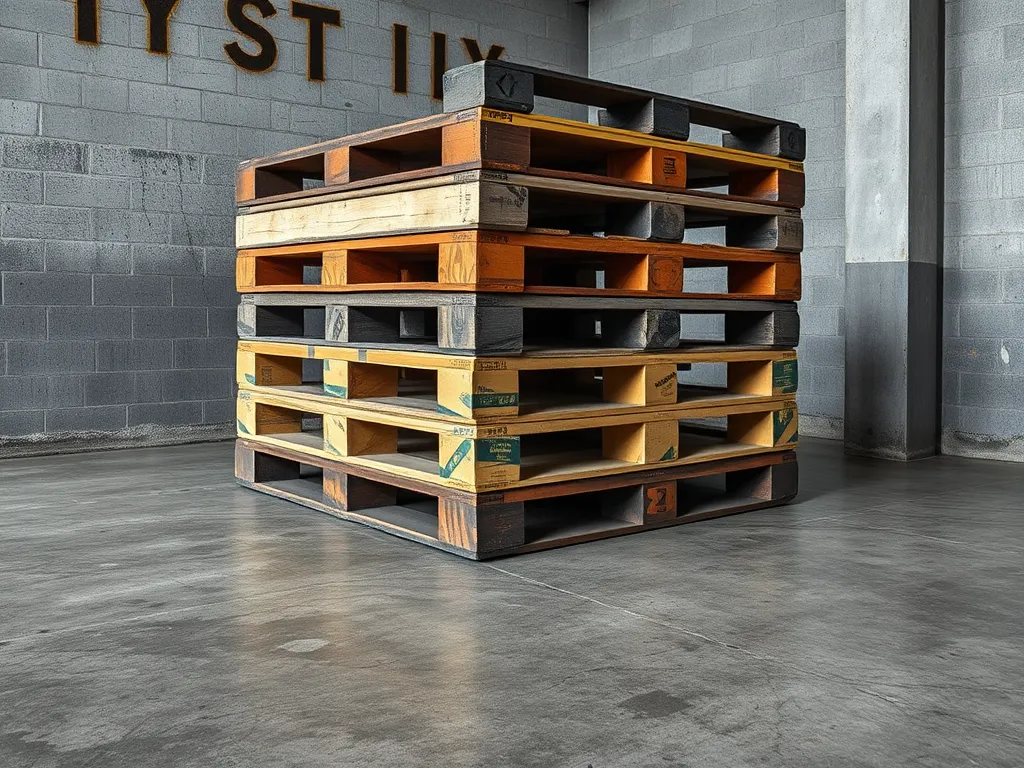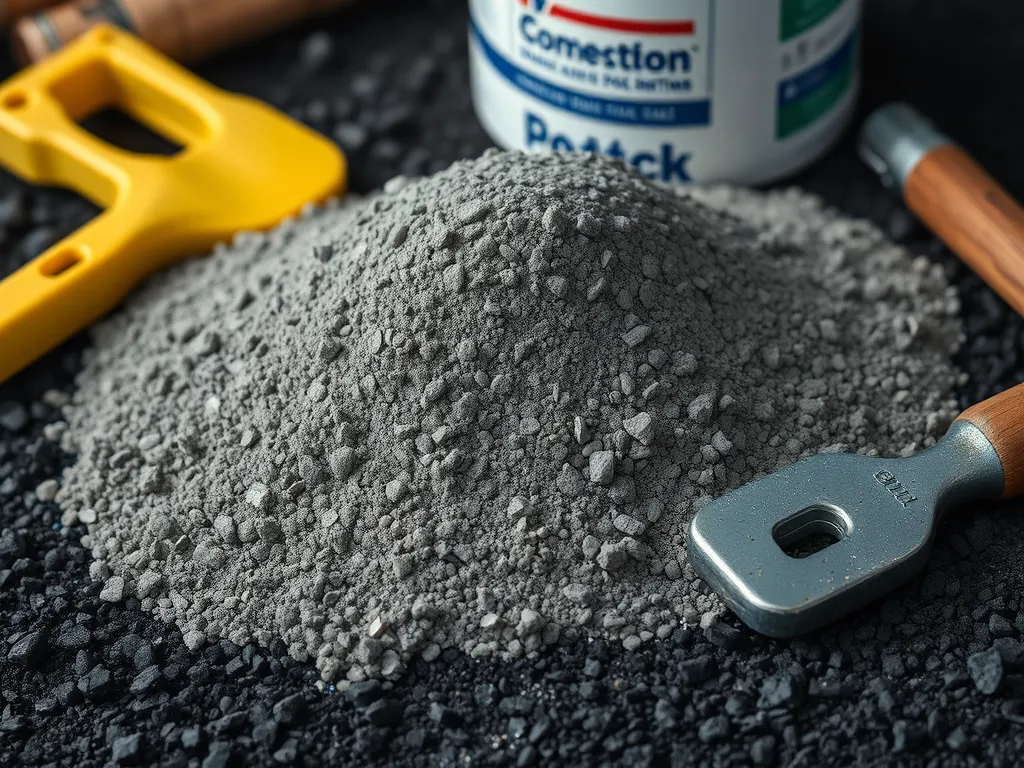Cold Mix Asphalt Storage: Keep Your Material Job-ready
Published on: October 16, 2025 | Last Updated: April 14, 2025
Written By: George Voss
Cold mix asphalt storage guidelines ensure this patching material stays usable by controlling three factors: temperature stability (50-80°F ideal), moisture exclusion, and airtight containment. Unlike hot mix asphalt that requires high-temperature application, cold mix uses emulsified binders that stay workable at ambient temperatures but degrade faster if exposed to elements. Unopened bags or drums maintain quality for 3-6 months when stored properly, while opened containers last 1-2 months with rigorous resealing. Critical risks include freeze-thaw cycles, humidity above 70%, and direct sunlight.
This article explains how to maximize cold mix asphalt shelf life through science-backed methods. We detail temperature thresholds, moisture barriers like polyethylene wraps, and container strategies from pallet stacking to drum liners. You’ll learn indoor vs outdoor storage trade-offs, spot early degradation signs (surface crusting or binder pooling), and apply EPA-recommended stock rotation practices. Construction managers and DIY users alike gain actionable steps to prevent material waste and cost overruns.
Contents
- Introduction to Cold Mix Asphalt Storage
- Cold Mix Asphalt Storage Duration
- Optimal Storage Conditions for Cold Mix Asphalt
- Indoor Vs Outdoor Storage Considerations
- Quality Maintenance Procedures
- Environmental Impact Of Storage Methods
- Frequently Asked Questions (FAQs)
- Closing Thoughts
- Useful References for You:
Introduction to Cold Mix Asphalt Storage
Cold mix asphalt stays workable at low temps. This makes it a go-to for quick fixes in cold weather. But its perks fade fast if stored wrong. Let’s break down what it is and why storage matters.
What is Cold Mix Asphalt?
Cold mix asphalt blends stone, sand, and liquid binder. Unlike hot mix, it needs no heat to apply. Used for pothole patches, driveways, and small jobs. The job mix formula often includes recycled asphalt pavement (RAP) – up to 30% in some blends. Stays soft until compacted, then hardens over time.
Importance Of Proper Storage for Asphalt Quality
Bad storage ruins cold mix. Moisture turns binder sticky or weak. Heat shifts split the mix. Sunlight dries it out. A 10°F temp swing can cut bond strength by 15%. Keep it sealed, dry, and cool to save $1,200+ per ton in rework costs. Proper methods also boost recycling – aged stock can still be reused in new batches if stored right.
Now that we’ve covered the basics, let’s explore how long you can store cold mix asphalt under different conditions.
Cold Mix Asphalt Storage Duration
Cold mix asphalt stays workable for months when stored right. Track shelf life to keep patch jobs quick and cost under $5 per square foot.
How Long is Cold Mix Asphalt Good for?
Unopened bags last 6-12 months. Once opened, use within 3-6 months. Check the job mix formula date stamped on bags.
Shelf life of unopened vs opened containers
Sealed 50-lb bags hold quality best. Opened containers let in air and moisture. Reseal cuts with plastic wrap and store above 40°F to slow breakdown.
| Container Type | Max Shelf Life |
|---|---|
| Unopened (factory-sealed) | 12 months |
| Opened (resealed) | 6 months |
Factors Affecting Storage Longevity
Heat over 90°F softens the bitumen binder. Cold under 20°F makes mix brittle. Keep bags dry – water ruins adhesion. UV light breaks down binders in 3-4 months if left in sun. Stack pallets 6 inches off concrete floors to stop moisture wicking.
Proper storage duration relies on what comes next: dialing in the right cold mix asphalt storage temperature and moisture controls.

Optimal Storage Conditions for Cold Mix Asphalt
Proper storage keeps cold mix asphalt workable for repairs. Follow these rules to guard quality and cut waste.
Temperature Requirements
Heat or cold harms the mix. Store where temps stay stable.
Ideal cold mix asphalt storage temperature range
Keep between 40°F and 80°F. Above 90°F? Binder softens, chunks form. Below 32°F? Mix gets stiff, hard to spread. Track temps with digital gauges in storage zones.
Moisture Control Measures
Water ruins asphalt bond. Block damp at all steps.
Protection from rain, snow, and humidity
Use sealed steel drums or thick plastic wraps. Cover stacks with tarps if stored outside. In wet zones, add silica packs to absorb damp. Check for leaks after storms.
Container Management
Right packing stops air and pests. Lift stock off the ground.
Sealing methods for asphalt preservation
Close bags with heat seals or zip ties. For bins, apply rubber gaskets on lids. Reseal part-used packs within 2 hours. This blocks oxidation, keeps mix soft up to 6 months.
Elevation and palletization best practices
Place pallets 6 inches above floors. Stack bins 4-high max. Allow 18-inch gaps between rows for air flow. Rotate stock weekly to stop settling.
Next, learn how storage site choice (indoors vs outdoors) affects asphalt life span.
Also See: Effect Of Weather on Asphalt Pouring Outcomes
Indoor Vs Outdoor Storage Considerations
Choosing between indoor and outdoor storage impacts cold mix asphalt performance. Temperature stability, moisture exposure, and environmental factors dictate material longevity. Proper selection preserves binder integrity and aggregate cohesion.
Can a Cold Patch Be Stored Outside?
Cold mix asphalt can be stored outdoors temporarily but requires strict safeguards. Unprotected outdoor storage risks accelerated degradation. Use outdoor solutions only for short-term projects or when indoor space is unavailable.
Risks of outdoor asphalt storage
Exposure to temperature swings above 90°F or below 40°F weakens PG (Performance Grade) binders. Rainfall increases moisture content beyond the 0.5-3% ideal range, causing premature hardening. UV radiation oxidizes bitumen, reducing flexibility by up to 15%. Contamination from dirt or debris alters the job mix formula, compromising pavement strength.
Recommended Indoor Storage Protocols
Climate-controlled warehouses maintain cold mix asphalt storage temperature between 50-70°F. Seal containers with butyl rubber gaskets to block humidity. Stack pallets 6-8 inches above concrete floors using wooden skids. Implement FIFO (First In, First Out) inventory systems for batches older than 6 months. Install desiccant packs in storage areas to keep relative humidity below 45%.
Proper storage sets the foundation for quality maintenance. Next, we’ll examine procedures to preserve material integrity during handling and application.

Quality Maintenance Procedures
Proper storage directly impacts cold mix asphalt’s workability and bonding capabilities. Follow these protocols to preserve material integrity from production through application.
Preventing Temperature Fluctuations
Maintain cold mix asphalt storage temperature between 50°F and 80°F. Extreme heat (>100°F) accelerates binder oxidation, while freezing (<32°F) causes aggregate segregation. Use insulated tarps for outdoor piles or climate-controlled warehouses for bulk storage. Monitor with infrared thermometers - temperature swings exceeding ±15°F daily degrade the job mix formula.
Contamination Prevention Strategies
Seal containers with 6-mil polyethylene liners and airtight lids. Store pallets 18″ away from walls to prevent moisture absorption. Separate from fertilizers, de-icing salts, or petroleum products – cross-contamination alters pH levels by 1.5-2.0 points, reducing adhesion by 30%. For opened bags, apply UV-resistant shrink wrap within 4 hours.
| Contaminant | Max Tolerance | Impact |
|---|---|---|
| Water | 0.5% by weight | Premature curing |
| Dust | 2% particles <75μm | Reduced density |
| Organic matter | 0% | Binder breakdown |
Material Handling Best Practices
Use FIFO (First In, First Out) inventory rotation – stock older than 6 months develops viscosity inconsistencies. Handle bags with nylon slings, not metal hooks, to avoid punctures. For bulk transfers, limit drop heights to <6 feet to prevent aggregate fracturing. Re-temper stored mix at 140°F for 45 minutes if separation occurs, but never exceed two reheating cycles.
Effective storage preserves the cold mix asphalt’s gradation and penetration values (85-100 dmm at 77°F). Up next: how these protocols align with sustainable asphalt storage solutions to minimize environmental impact.
Environmental Impact Of Storage Methods
Proper cold mix asphalt storage conditions directly affect environmental stewardship. Incorrect methods risk material degradation, leading to landfill contributions and wasted resources. Implementing precise guidelines reduces ecological strain while maintaining road repair efficiency.
Sustainable Asphalt Storage Solutions
Sealed steel drums or double-lined polymer bags cut oxidation rates by 40-60% compared to open-air stockpiles. These containers align with cold mix asphalt guidelines for storage by blocking moisture ingress and volatile organic compound (VOC) emissions. Temperature-stable warehouses (<50°F) paired with solar-powered ventilation systems slash energy use by 22% annually. For large-scale projects, covered bulk storage silos with automated moisture sensors prevent spoilage of 15+ ton batches.
Recycling Considerations for Aged Material
Cold mix asphalt reaching its 9-12 month shelf life retains 70-80% reusable aggregates. Cold-in-place recycling (CIR) processes blend aged material with fresh PG 64-22 binder at 3:1 ratios for pothole repairs. Always test stored stock for penetration values above 60 dmm before reuse. Facilities following cold mix asphalt maintenance procedures report 30% lower virgin material costs and 12-ton annual waste reductions. Note: RAP (Reclaimed Asphalt Pavement) requires milling to 3/8″ gradation for optimal integration.
Next, let’s address common challenges through targeted FAQs about material handling and application thresholds.

Frequently Asked Questions (FAQs)
How Long Can Asphalt Be Stored Effectively?
Cold mix asphalt can typically be stored for 6-12 months if unopened; once opened, it should be used within 3-6 months to maintain quality.
What Temperature Can You Apply Cold Mix Asphalt?
Cold mix asphalt can be applied at ambient temperatures ranging from 40°F to 80°F. Applying it in conditions below 32°F or above 90°F can compromise its quality and effectiveness.
Does Freezing Affect Cold Patch Quality?
Yes, freezing temperatures can adversely affect cold patch quality, making the material brittle and difficult to work with. It’s essential to keep cold mix asphalt above freezing for optimal performance.
How to Identify Degraded Asphalt Material?
Signs of degraded cold mix asphalt include surface crusting, separation of the binder from the aggregate, and pooling of the binder. These indicators suggest that the material may not provide adequate performance for repair applications.
Closing Thoughts
Storing cold mix asphalt correctly is vital for its performance and longevity. Proper storage protects the material from environmental factors, ensuring it remains effective when applied. Remember that maintaining optimal temperature, controlling moisture, and managing containers can significantly enhance asphalt quality.
By following the outlined guidelines, you can maximize the lifespan of your cold mix asphalt, reduce waste, and contribute to sustainable practices in construction. Always monitor your storage conditions and maintain quality checks to avoid any degradation.
For more valuable insights and resources related to cold mix asphalt and other construction topics, check out Asphalt Calculator USA.
Useful References for You:
- Huang, Y. H. (2004). Pavement Analysis and Design (2nd ed.). Upper Saddle River, NJ: Pearson/Prentice Hall.
- Cold Mix Asphalt | Waller County Asphalt
- What Is Cold Mix Asphalt? Cold Mixed Asphalt Guide


